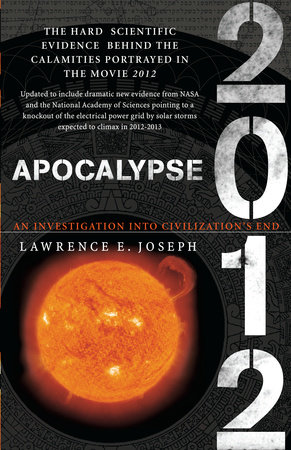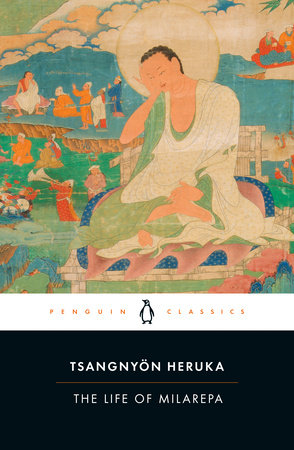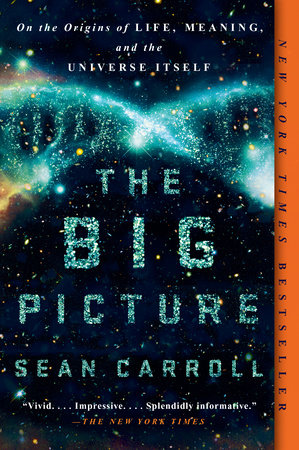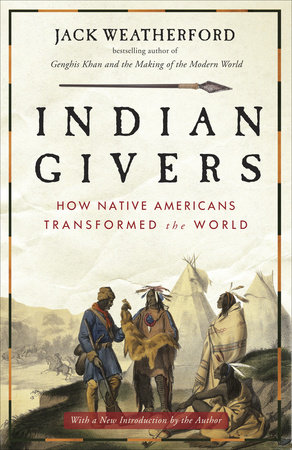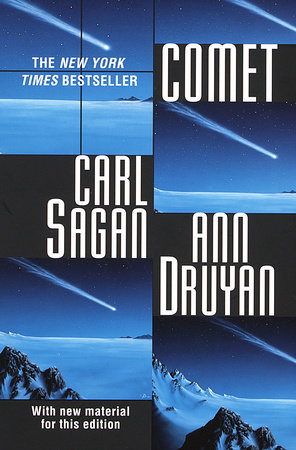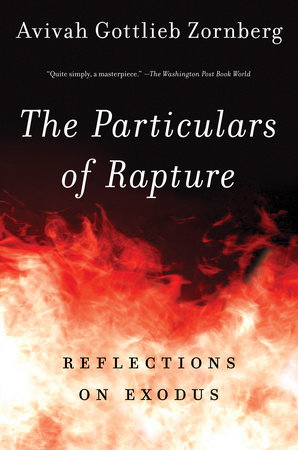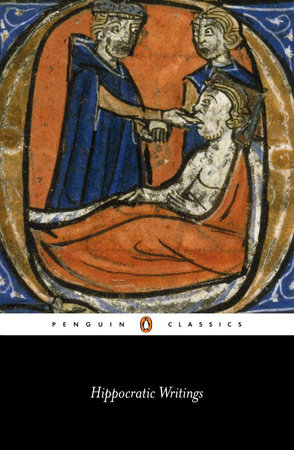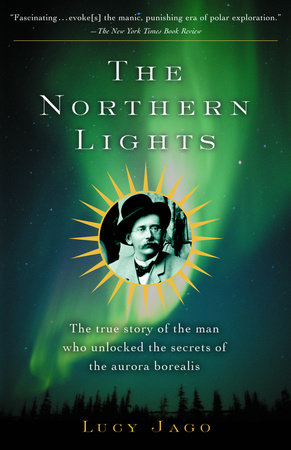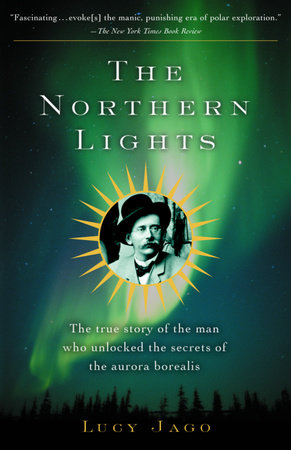A Conversation with Lucy Jago, author of The Northern Lights
Q: When did you first learn about the Norwegian scientist Kristian Birkeland, and what drew you to write a book about his life and discoveries?
A: While making a film about the sun for a BBC Science series called “The Planets,” I looked for ways to illustrate the influences our star has on the earth besides providing heat and light. The aurora are the most dramatic, mysterious phenomena caused by the sun so I contacted scientists at the Auroral Observatory in Tromsø for advice on when and how to film them. They provided me with the information I needed, and told me about an amazing machine they had just restored which could recreate the aurora in miniature. The man who had invented this machine, around 1905, was Kristian Birkeland. When I heard more about this fascinating, brilliant, but tragic figure, I was hooked and began to research more deeply into his life. I traveled to Norway during holidays to spend time in archives and up on mountains.
In the winter of 1899/1900, in the most northerly part of Norway, well into the Arctic Circle, Birkeland built an observatory to watch the aurora. I was lucky enough to arrive on the only day they had ever allowed "skidoos" up Haldde mountain and so I hitched a ride to the top where the little stone observatory perches. It was incredible to stand on top of that peak and think that Birkeland had spent a winter (often braving atrocious weather conditions) with this breath-taking view stretching north to the Arctic Sea and south to the mountain plateau that is the winter home of the Sabme (Lapp) reindeer herders. That night the temperature was minus 20 degrees but the air was completely still. I stood and watched the most brilliant display of aurora I had ever seen, shooting over the mountain tops in the east like lava from a volcano, writhing overhead to the opposite horizon, snaking into crowns and shooting towards the ground like harpoons of light. I could quite see why, previous to Birkeland’s scientific explanation for the phenomenon, people assumed the aurora were the Valkyries riding out of Valhalla to point out which soldiers would die in battle, or that they were portents of war and disaster or messengers from the spirit world. No rational or scientific explanation could be exciting enough to equal the beauty of the Northern Lights. That night I understood for the first time why Birkeland became so obsessed in his quest to unravel the mystery of the aurora.
Q: Can you briefly explain the scientific “hunch” that led Kristian Birkeland through years of tracking the aurora borealis?
A: Birkeland was convinced that the aurora were created by charged particles streaming from the sun, drawn towards the poles of the earth by the magnetic field surrounding the planet and creating the lights as they collided with atoms in the earth’s atmosphere, about 100 kilometers above the surface of the planet. Although he spent winters in Arctic conditions to gather evidence to prove his theory, created complicated mathematical models to support his field work and even built a machine in which to recreate the lights in his laboratory, few scientists of his day believed Birkeland. His ideas were too far ahead of their time to gain acceptance; he was not proven right until the late sixties, when satellites could provide data to back Birkeland’s theories.
Q: In an early attempt to fund his Northern Lights research, Birkeland invested much time and energy in experiments for the hydroelectric industry. What were some of his successes and failures in this area?
A: His success was in developing switching mechanisms that allowed engineers to easily start and stop the electric currents created by the generators. His failure was that he nearly destroyed an entire hydroelectric facility in the process! While doing experiments for his switches he noticed that a strong electromagnetic field can attract or repel metal objects near it. While most engineers had ignored this strange effect, Birkeland, with his intuitive understanding of the forces at play, used the information to create an “electromagnetic cannon” that he eventually developed into an electrically powered torpedo for warships.
Q: How and why did Birkeland end up building an electromagnetic furnace?
A: During an important demonstration of his cannon, at which were gathered the great and the good of Christiania (Oslo) society, along with some of Europe’s major weapons manufacturers, his invention dramatically backfired, spewing flames and arcs of electricity towards the audience, accompanied by a tremendous bang. The ensuing panic diverted the audience from the fact that the missile had successfully hit its target. Shares in Birkeland’s cannon company slumped dramatically. But, rather than become despondent, Birkeland used the lessons learned from the cannon’s faults to create another invention from similar technology—an electromagnetic furnace. His design was the first economically viable method to harness atmospheric nitrogen and thus manufacture fertilizer. This was a huge achievement that helped all of Europe avoid a severe agricultural crisis.
Q: The Nobel Committee wanted to nominate Kristian Birkeland for the prize, in recognition of the furnace he invented rather than the auroral theory he devised. What factors thwarted his nomination?
A: The “factor” was Sam Eyde, Birkeland’s business partner in the fertilizer company. Eyde had found the money to fund Birkeland’s development of the prototype furnace into a design economically viable for large-scale manufacture. It would seem that Eyde, with his excellent contacts in Sweden (where the Nobel Committee sits) managed to scupper plans to nominate Birkeland alone for the prize. Eyde wanted to be included in the nomination, but the prize is designed to recognize the original idea, not its commercial application. At the time, relations between Sweden and Norway were also very delicate and the committee appears to have been reluctant to nominate Birkeland if his nomination could have become contentious.
Q: It might surprise some readers to learn that a scientist pursuing an explanation of the Northern Lights spent years conducting research in equatorial Africa. What did Birkeland hope to gain from his studies in Africa?
A: Birkeland traveled to Egypt and Sudan to study the Zodiacal Light—a subtle light effect seen in night skies created by sunlight scattered off small particles orbiting the sun. The Zodiacal Light is more easily seen at locations near to the equator and Birkeland hoped his research in Africa might provide the proof he needed for his auroral theories.
Q: Referring to World War I, you write: “The declaration of war was the start of [Birkeland’s] own, inexorable slide into tragedy.” How so?
A: War meant that Birkeland’s assistants had to return to Norway, leaving him to continue his research alone. It seems that Birkeland had fallen in love in Egypt with a Greek pianist called Hella, who also returned to Europe—leaving Birkeland lonely and isolated. Never a man skilled at self-preservation, Birkeland began to drink too much whiskey, take large doses of Veronal (a highly addictive and damaging barbiturate prescribed for insomnia) and slide into a twilight of excessive work, paranoia and illness—with no one to stop him. The war also distracted scientific attention away from Birkeland’s work and his achievements. His scientific legacy was forgotten or refuted before it could be built upon. Birkeland’s last treatise was lost at sea when the shop carrying his effects from Japan to Norway sank. His published work was largely ignored for fifty years after his death. But many of his ideas, considered crazy at the time, were later accepted—in particular the existence of field-aligned currents created by charged particles streaming from the sun, now called Birkeland Currents.
Q: Do you think Birkeland was a genius?
A: I have a rather pragmatic view of what “genius” is—Isaac Newton, when questioned as to how he would arrive at an extraordinary discovery, replied “by thinking constantly upon it.” It would appear that a great number of people we call geniuses have a better than average grasp of their subject, combined with total dedication to their quest. Few people would sacrifice their health, marriage, every moment of potentially free time—even their sleep—to a single end. But this is just what Birkeland did. In the course of his life he formed theories of such prophetic brilliance that I do think he could be called a genius.
I often wonder how lonely and frustrated Birkeland must have been, met repeatedly with misunderstanding or incomprehension. As he once said, “A very few lonely pioneers make their way to high places never before visited . . . they create the living conditions of mankind and the majority are living on their work.”
Q: Would you have liked him?
A: I think I would have loved to be in Birkeland’s company—for short periods! He appears to have been extremely intense, always challenging convention in his social and work life. He would surely have been an excellent conversationalist. He thought deeply beyond his subject about philosophical questions, such as the existence of God and of genius. But he also loved to play practical jokes on his students and to buy large sacks of confetti which he would strew about liberally, with the slightest excuse. I think he would have been a good person to know if you needed some difficult point explained—he wasn’t patronizing, and was impatient only if you appeared not to be trying hard enough to understand what he was saying. But I wouldn’t have wanted to be romantically involved with him: any man able to arrange a lecture on his wedding day is not what I’d call a good prospect!
